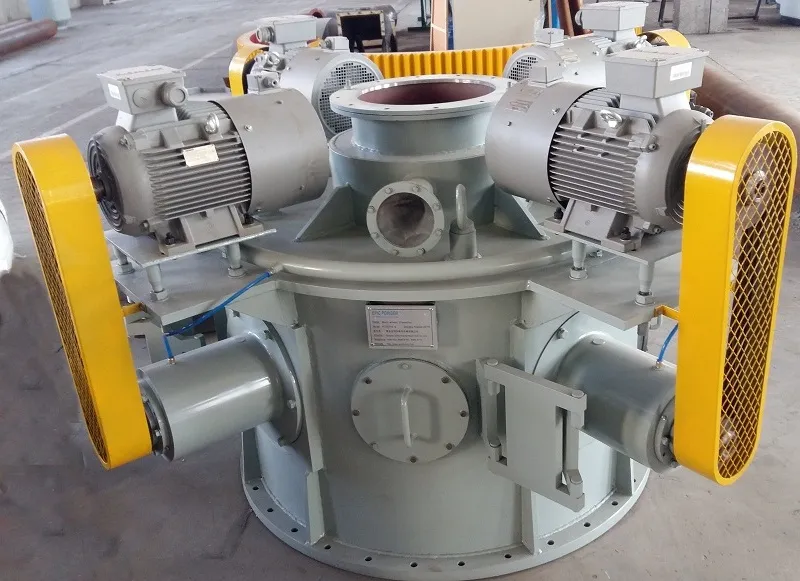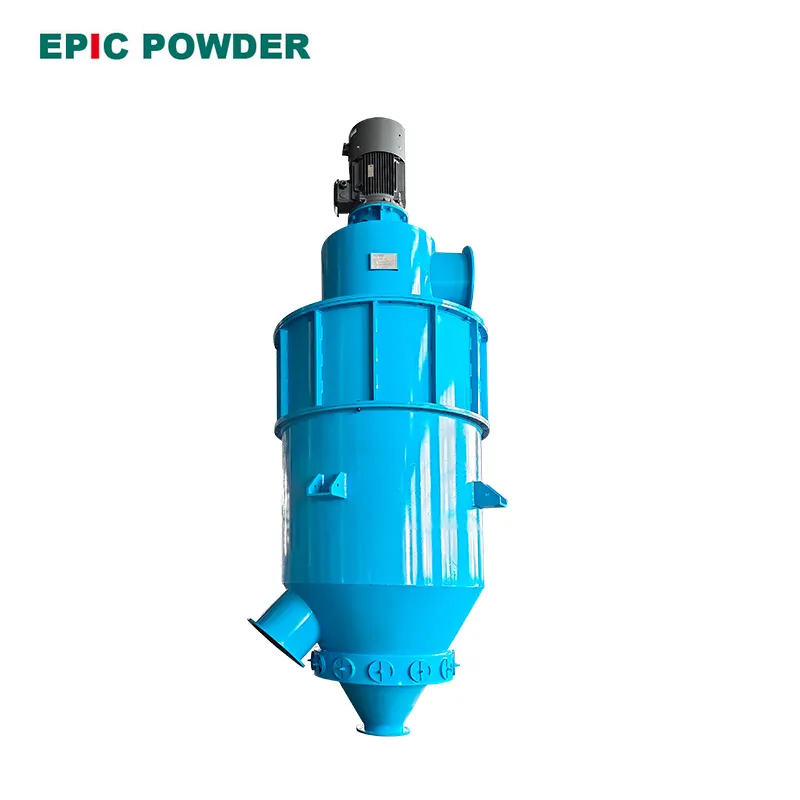In modern powder processing industries, precision and consistency are critical. Whether producing fillers for plastics, pigments for coatings, or active ingredients for pharmaceuticals, controlling particle size distribution determines product performance and market competitiveness. One piece of equipment plays a particularly important role in achieving this control — the air classifier.
Air classifiers use airflow and centrifugal force to separate particles by size, shape, and density. Through this process, manufacturers can precisely control the particle size distribution (PSD) of powders. The PSD directly affects their functionality, appearance, and usability. This article explains how air classifiers improve product quality. It also introduces their working principles and importance in modern powder processing lines.

What Is an Air Classifier and How Does It Work?
An air classifier is a precision device that separates particles suspended in an air stream according to size and density. It typically consists of a classification chamber, a rotor (or wheel), and a system for feeding and collecting materials.
In operation, the powder feed enters the classifier and is dispersed by airflow. As the particles travel through the classification zone, fine particles are carried away by the air stream toward the rotor, while coarse particles — due to higher mass — cannot overcome the centrifugal force and are discharged as coarse material. By adjusting the rotor speed and airflow rate, the operator can control the cut size (the boundary between fine and coarse fractions).
This dynamic separation process allows continuous and precise classification without sieving or mechanical contact, minimizing contamination and wear.
Why Is Particle Size Distribution So Important?
The particle size distribution (PSD) of a powder has a profound impact on its performance in downstream applications:
- In plastics and rubber, narrow PSD ensures uniform dispersion and better mechanical strength.
- In paints and coatings, finer and more consistent particles improve gloss, color strength, and hiding power.
- In pharmaceuticals, precise PSD affects solubility, bioavailability, and pharmaceutical release rate.
- In cement, ceramics, and minerals, PSD determines reactivity, packing density, and surface area.
A wide PSD — where too many coarse or fine particles coexist — often causes uneven product properties, poor processability, and wasted raw materials. Air classifiers solve this by selectively removing unwanted fractions, producing powders with optimal consistency and performance.
Air classifiers are designed to directly target the most critical powder quality issues: inconsistent particle sizes, contamination from oversized particles, and poor flowability.
Air classification enhances D50 and D97 control, removes coarse impurities, and improves powder fluidity—resulting in a more predictable, process-ready product.
How Do Air Classifiers Enhance Consistency and Product Stability?

Consistency is a hallmark of high-quality products. Air classifiers maintain tight control over the particle size cut point, ensuring each production batch meets the same specification.
In closed-circuit systems — where a grinding mill is paired with an air classifier — the classifier continuously monitors and separates the product. Oversized particles are automatically returned to the mill for further grinding, while the qualified fine powder exits as the final product.
This real-time feedback mechanism enables:
- Stable product fineness, even if the raw material or mill performance fluctuates.
- Reduced over-grinding, preserving particle morphology and lowering energy consumption.
- Uniform surface area, which ensures consistent performance in chemical reactions or blending.
Such precision is especially important for high-end materials like ultrafine calcium carbonate, silicon powder, lithium battery cathode and anode materials, or high-purity quartz.
How Do Air Classifiers Reduce Contamination and Improve Purity?
Mechanical sieving or screening involves direct contact between powder and metal mesh, which can introduce impurities or wear debris. Air classification, by contrast, is contact-free, relying solely on air dynamics.
This minimizes contamination — a crucial advantage for industries that require high purity, such as:
- Electronic-grade silicon or quartz powder
- Ceramic materials for semiconductors
- Pharmaceutical excipients
- Food additives
Furthermore, by using ceramic liners, polyurethane coatings, or wear-resistant materials in construction, air classifiers can handle abrasive powders like quartz, zirconia, or alumina while maintaining purity and equipment longevity.
How Do Air Classifiers Improve Energy Efficiency?
Efficient classification directly reduces grinding energy consumption. In a traditional open grinding process, the entire material continues to be milled regardless of whether it has reached the target size, leading to over-grinding and wasted energy.
When combined with an air classifier, the system becomes a closed-circuit grinding system. Once fine particles reach the target size, they are immediately removed from the grinding zone, preventing unnecessary milling. As a result:
- Overall energy consumption drops by 20–40%.
- Throughput increases, since only coarse particles return for further grinding.
- Productivity and uniformity improve, reducing the need for reprocessing.

What Are the Key Factors in Selecting the Right Air Classifier?
Choosing the correct air classifier depends on several parameters:
- Material properties: hardness, density, moisture content, and flowability.
- Required cut size and precision.
- Production capacity and energy efficiency goals.
- Environmental and purity requirements.
For instance, in high-purity applications like electronic materials, ceramic-lined classifiers with inert gas systems are preferred. For large-scale mineral or calcium carbonate production, robust dynamic classifiers with high throughput are more economical.
Manufacturers such as EPIC Powder Machinery offer customized solutions — combining air classifiers with ball mills, jet mills, or impact mills — to build integrated systems that meet specific product goals and performance standards.
Why Are Air Classifiers Essential for Modern Powder Processing?
In today’s fine powder industries, air classifiers are not just auxiliary equipment. They are the core technology that defines product quality. Air classifiers ensure precise particle size control and stable product consistency. They also provide higher purity and greater energy efficiency. Together, these advantages elevate the entire value chain of powder production.
From calcium carbonate and silicon powder to lithium battery materials and pigments, air classifiers deliver superior performance. They also help manufacturers reduce costs and meet environmental requirements. As industries demand finer and more consistent materials, air classification remains essential. It will continue to be a cornerstone of high-quality powder processing.

“Thanks for reading. I hope my article helps. Please leave a comment down below. You may also contact Zelda online customer representative for any further inquiries.”
— Posted by Emily Chen
